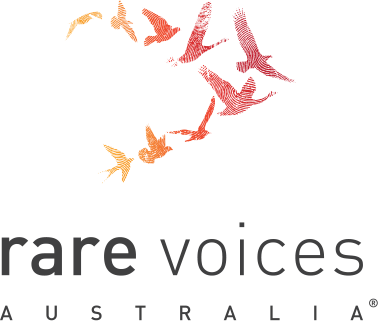Rare Disease Classifications
There are at least 7, 000 known rare diseases and, with advances in technology, new diseases are discovered regularly.1 In Australia, data for most rare diseases are not captured in health information systems or registries, and there is no coordinated strategy for rare disease data.1 The implementation of a nationally coordinated and systematic approach to the collection and use of rare disease data is essential to informing best practice clinical care and health service planning.2
One way to make rare diseases visible in health information systems and to facilitate implementation of rare disease data collection is through the systematic use of rare disease classifications. Using universal codes or classifications for individual diseases provides a common language for recording, reporting and monitoring diseases.
This page contains information on internationally recognised classifications of diseases, including rare diseases. Where available and relevant, these international classifications (ORPHAcodes and ICD-11) are included on individual rare disease information pages on the RARE Portal.
The information on this page is intended as a guide only. If you are aware of any additional information that may benefit stakeholders with an interest in this page or another page on the RARE Portal, or if you notice any broken links or misleading information, please let us know via the Contribute page.
Quick Page Search:
ORPHAcodes
International Classification of Diseases (ICD)
SNOMED CT-AU
References
Acknowledgements
ORPHAcodes
Orphanet, which was established by INSERM (French National Institute for Health and Medical Research, is the international reference resource for information on rare diseases and orphan drugs. Orphanet classifications of rare diseases are known as ‘ORPHAcodes’.3 ORPHAcodes are recognised as the most appropriate classification for clinical coding of rare diseases in Europe, and globally by the International Rare Disease Research Consortium.3
An ORPHAcode represents an internationally recognised, autogenerated ‘unique, time-stable and non-reusable numerical identifier’ for a particular rare disease.3 Rare diseases are classified by medical specialties, and due to the multisystemic nature of many rare diseases, more than one classification may be applied.3 ORPHAcodes provide the most comprehensive coverage of rare diseases and are gradually being used to incorporate rare disease classifications into other coding systems – see RARE Portal: International Classification of Diseases (ICD) and RARE Portal: SNOMED Clinical Terms (SNOMED CT) for more information.
More information about ORPHAcodes can be found at Orphadata: Orphanet Nomenclature for coding.
International Classification of Diseases (ICD)
The World Health Organization’s (WHO) legally mandated international health data standard—International Classification of Diseases (ICD) — provides a global standard for classification and terminology of diseases.4 The latest version of the ICD, ICD-11, was adopted by the 72nd World Health Assembly in 2019 and came into effect on 1 January 2022.4 In ICD-11, each disease is assigned a unique and unchanging identifier as a code, and is organised in a linearised hierarchy of disease categories.5
In collaboration with Orphanet, there are increasing efforts to incorporate rare disease classifications into ICD.6,7
SNOMED CT Australian Release (SNOMED CT-AU)
SNOMED Clinical Terms (CT) is an international collection of clinical terminology designed for clinicians to record patient data in a consistent manner at the point of care.8 This allows for sharing of information between healthcare systems and enables accurate analysis of clinical data. Through a collaboration between SNOMED International and INSERM, rare disease content is continually being added to SNOMED CT and aligned through precise mapping of SNOMED’s own codes to Orphacodes. More information about the SNOMED CT/Orphanet Map can be found at Orphadata: Scientific Associated Resources.
SNOMED CT terminology is available for use in hospital electronic medical record (EMR) systems in Australia, with SNOMED CT-AU customised to include terminology relevant to the Australian healthcare context.8 It includes the Australian Medicines Terminology (AMT), which is the unique identification of commonly used medicines in Australia. The SNOMED CT-AU package is developed, managed, and distributed by the National Clinical Terminology Service (NCTS) within the Australian Digital Health Agency.8 It can be downloaded and integrated into clinical information technology (IT) systems.
References
- Australian Government. Department of Health. National Strategic Action Plan for Rare Diseases. Canberra; 2020. 63 p. https://www.health.gov.au/sites/default/files/documents/2020/03/national-strategic-action-plan-for-rare-diseases.pdf
- Rare Voices Australia and Monash University. Recommendations for a National Approach to Rare Disease Data, Findings from an Audit of Australian Rare Disease Registries. 2023. 31 p. https://rarevoices.org.au/wp-content/uploads/2023/08/RecommendationsforaNationalApproach_RareDiseaseData_August2023.pdf
- RD-CODE Project. ORPHA coding. Accessed 13 September 2023. http://www.rd-code.eu/introduction/
- World Health Organization. International Statistical Classification of Diseases and Related Health Problems (ICD). Accessed 13 September 2023. https://www.who.int/standards/classifications/classification-of-diseases
- Harrison JE, Weber S, Jakob R, Chute CG. ICD-11: an international classification of diseases for the twenty-first century. BMC Med. Inform. Decis. Mak. 2021; 21(6):206. https://doi.org/10.1186/s12911-021-01534-6
- Aymé S, Bellet S, Rath A. Rare diseases in ICD11: making rare diseases visible in health information systems through appropriate coding. Orphanet. J. Rare Dis. 2015; 10:35. https://doi.org/10.1186/s13023-015-0251-8
- Mazzucato M, Pozza LVD, Facchin P, Angin C, Agius F, Cavero-Carbonell C, et al. ORPHAcodes use for the coding of rare diseases: comparison of the accuracy and cross country comparability. Orphanet. J. Rare Dis. 2023; 18:267. https://doi.org/10.1186/s13023-023-02864-6
- Australian Government. Australian Digital Health Agency. SNOMED CT-AU Mapping Guidelines. NSW; 2022. 50 p. https://www.healthterminologies.gov.au/library/DH_3643_2022_SNOMEDCTAU_MappingGuidelines_v3.0.pdf
Acknowledgement
Thank you to Dylan Gration [Manager Data and Digital Linkages at Western Australia (WA) Register of Developmental Anomalies and Rare Diseases (WARDARD), and Digital Advisor at the Clinical Centre of Expertise for Rare and Undiagnosed Diseases (Rare Care Centre)] for contributing information to this page.
